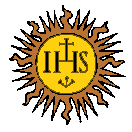|
|
| St.John Soan de Goto |  |

Christianity flourished in Japan after the coming of Francis Xavier in 1549, so that by 1590 there were 200,000 believers. This growth, however, was dependent on the favour of political leaders.
When the chief defender of the Christians had a change of heart, the Jesuits were ordered expelled from Japan in 1592. Some stayed behind, undercover, to care for the people. A new persecution broke out in 1596 after the pilot of a sunken Spanish ship suggested that Spain was planning an invasion of Japan.
Two Jesuit scholastics (Paul Miki and John Soan de Goto) and a Jesuit brother (James Kisai) were arrested together with the Franciscan missionaries left in Japan. Miki, from an affluent family, was a noted preacher, even though not ordained. de Goto had fled persecution with his family to Nagasaki; when he entered the Jesuits, he was serving as a catechist in Osaka at the time of his capture. James Kisai received his early training as a Buddhist. He was married to a Christian woman, had a child, and eventually separated from his wife when she returned to Buddhism. He went to work for the Jesuits in Osaka, serving as porter and guestmaster, was an able catechist, and entered the Jesuits just before his capture with Miki and de Goto.
They were sentenced to crucifixion and endured a month-long public derision while being driven the 600 miles to Nagasaki. Embracing their crosses and singing the Te Deum, they were all crucified. Paul Miki was then pierced with a lance and so became the first Jesuit martyr of Japan.
They were canonized by Pius IX in 1862.